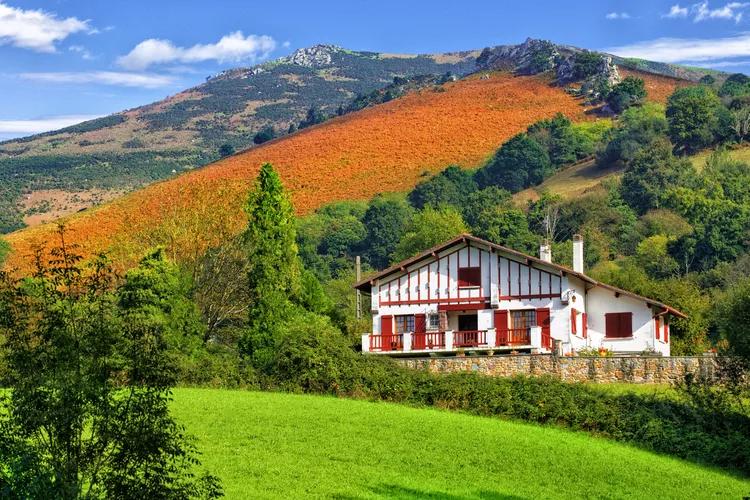Summary
Discover the unique, beautiful French Basque country
The part of France called Basque country (Pays Basque) is glorious and very different. On the west coast of France, you arrive from Bordeaux and you’re suddenly in mountainous terrain; described by one 17th century traveler as ‘very bumpy country’. Historically divided into seven Basque provinces, they share the same language and culture on both sides of the border with Spain.
Basque Independence
The Basque people have always been fiercely independent, and identify more with their Spanish Basque neighbors in many ways than they do with their French neighbors (especially in distant cities like Paris). They speak their own language of Euskera which is shared with their Spanish counterparts and you’ll see bilingual signs and posters throughout the region.
Basque Architecture
There are other differences as well, the most striking of which is the architecture. Instead of the orange stonewashed buildings with their red terracotta tiles which you expect from this part of southern France, the Basque style features stark white buildings made of cob then coated with whitewash, and with brown, green, burgundy or navy wood timbers and overhanging tiled roofs. These traditional houses have inspired many suburban villas.
Basque churches are different as well. Many of them were renovated in the 16th century, with the belfry being more prominent than in other parts of France. It’s flat rising to three pointed gables, each with a cross.
A Unique Basque Sport
One of the defining characteristics of Basque country is, surprisingly, a game. Look out for the concrete courts used to play the national game of pelota where two players hit a hard, leather-covered ball against a high wall at one end of the court. It’s a bit like squash, except the players use either their bare hands or a basket-like extension. It’s apparently very dangerous; the ball can travel up to 200 kph so don’t try this yourself unless you have a good trainer with you.
The Côte Basque
The Côte Basque runs up from the Spanish border just below the resort of Hendaye. This is a coastline of lovely long sandy beaches and rocky outcrops that break up the sealine. It’s a mere 30 kilometers long from here to the mouth of the Adour river but it attracts more than its fair share of holidaymakers. Surfers particularly flock here, coming for the rolling waves that pound onto the Atlantic shores.
Cities and Towns of the Basque Coast
Biarritz is one of France’s great seaside resorts. It owes its fame to Napoleon III who turned the small town into a playground for the rich and aristocratic. Biarritz suffered when the Côte d’Azur but bounced back as one of the great surfing towns, attracting sports enthusiasts from across the globe. Today the chic resort is as much fun as ever.
Bayonne is not directly on the Atlantic, but some 5 km (3 miles) inland on the River Adour. It’s the economic and political capital of the Pays Basque, making it very distinctive with its tall buildings and traditional green and red-painted woodwork. It has a fortified old town to stroll through, a cathedral, good restaurants and shops, and the Musée Basque, which showcases what life was like in the Basque country through farm implements and a seafaring gallery. However, be warned, the website is in French, Spanish, and Euskera.
St-Jean-de-Luz is a former important port that has a wonderful old quarter looking out onto the protected sandy bay. It’s the most attractive of the resorts along this stretch of coast, so it becomes quite crowded during July and August; therefore, it’s best to visit at other times. It’s still a busy fishing port for anchovy and tuna. The town features townhouses that once belonged to the merchants and sea captains who brought wealth to the town in the 17th and 18th centuries, along with the church of St-Jean-Baptiste.





